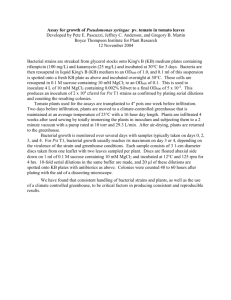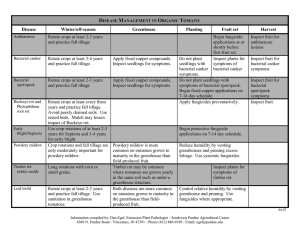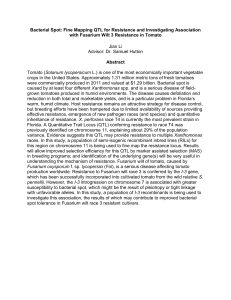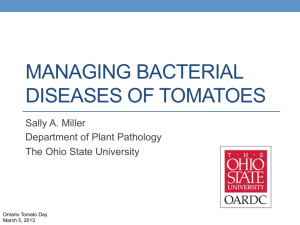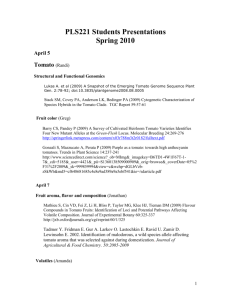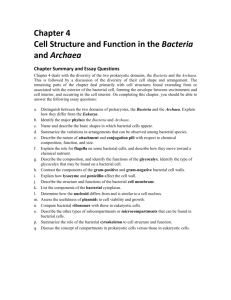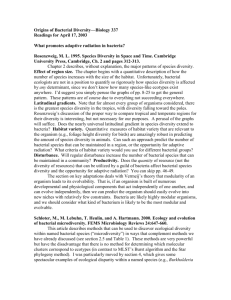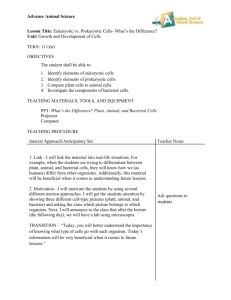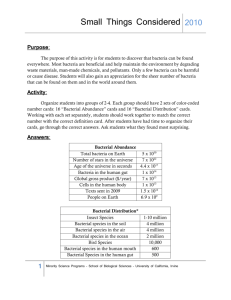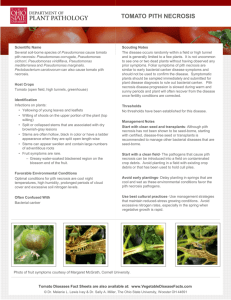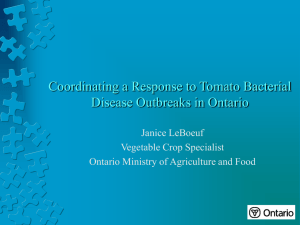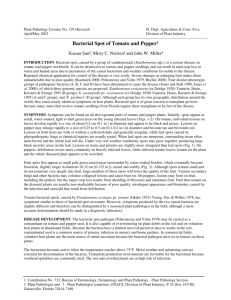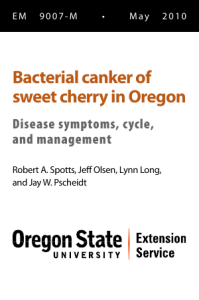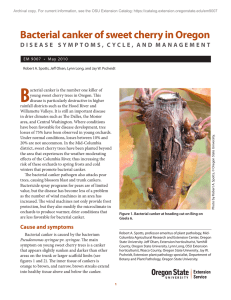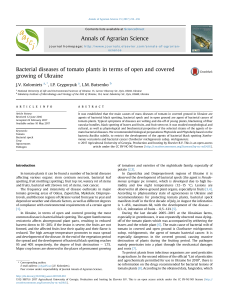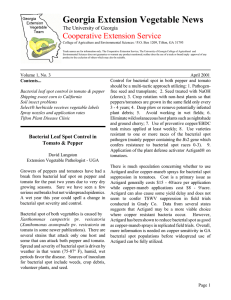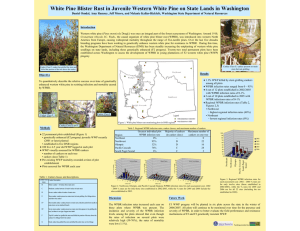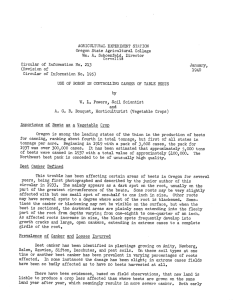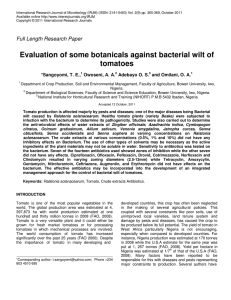BACTERIA BACTERIAL CANKER OF TOMATO
advertisement
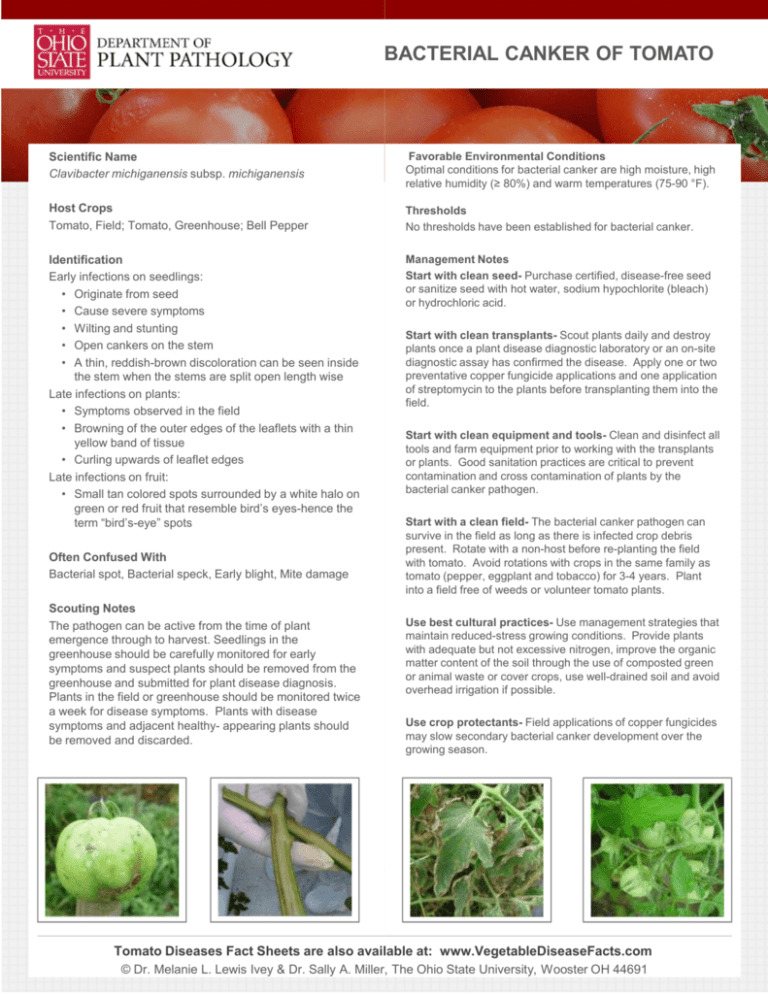
BACTERIAL CANKER OF TOMATO Scientific Name Clavibacter michiganensis subsp. michiganensis Favorable Environmental Conditions Optimal conditions for bacterial canker are high moisture, high relative humidity (≥ 80%) and warm temperatures (75-90 °F). Host Crops Tomato, Field; Tomato, Greenhouse; Bell Pepper Thresholds No thresholds have been established for bacterial canker. Identification Early infections on seedlings: • Originate from seed • Cause severe symptoms • Wilting and stunting • Open cankers on the stem • A thin, reddish-brown discoloration can be seen inside the stem when the stems are split open length wise Late infections on plants: • Symptoms observed in the field • Browning of the outer edges of the leaflets with a thin yellow band of tissue • Curling upwards of leaflet edges Late infections on fruit: • Small tan colored spots surrounded by a white halo on green or red fruit that resemble bird’s eyes-hence the term “bird’s-eye” spots Management Notes Start with clean seed- Purchase certified, disease-free seed or sanitize seed with hot water, sodium hypochlorite (bleach) or hydrochloric acid. Often Confused With Bacterial spot, Bacterial speck, Early blight, Mite damage Scouting Notes The pathogen can be active from the time of plant emergence through to harvest. Seedlings in the greenhouse should be carefully monitored for early symptoms and suspect plants should be removed from the greenhouse and submitted for plant disease diagnosis. Plants in the field or greenhouse should be monitored twice a week for disease symptoms. Plants with disease symptoms and adjacent healthy- appearing plants should be removed and discarded. Start with clean transplants- Scout plants daily and destroy plants once a plant disease diagnostic laboratory or an on-site diagnostic assay has confirmed the disease. Apply one or two preventative copper fungicide applications and one application of streptomycin to the plants before transplanting them into the field. Start with clean equipment and tools- Clean and disinfect all tools and farm equipment prior to working with the transplants or plants. Good sanitation practices are critical to prevent contamination and cross contamination of plants by the bacterial canker pathogen. Start with a clean field- The bacterial canker pathogen can survive in the field as long as there is infected crop debris present. Rotate with a non-host before re-planting the field with tomato. Avoid rotations with crops in the same family as tomato (pepper, eggplant and tobacco) for 3-4 years. Plant into a field free of weeds or volunteer tomato plants. Use best cultural practices- Use management strategies that maintain reduced-stress growing conditions. Provide plants with adequate but not excessive nitrogen, improve the organic matter content of the soil through the use of composted green or animal waste or cover crops, use well-drained soil and avoid overhead irrigation if possible. Use crop protectants- Field applications of copper fungicides may slow secondary bacterial canker development over the growing season. Tomato Diseases Fact Sheets are also available at: www.VegetableDiseaseFacts.com © Dr. Melanie L. Lewis Ivey & Dr. Sally A. Miller, The Ohio State University, Wooster OH 44691
